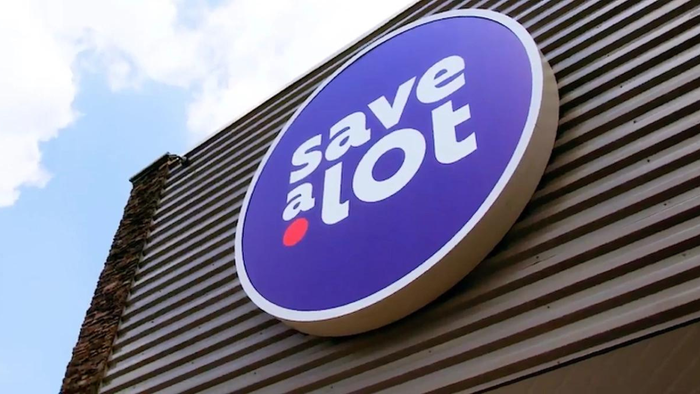Making a move
January 1, 2018
Modifications to the government’s dietary guidelines are expected to draw more shoppers to the wellness category this year. By Carol Radice As the political debate rages about the amount of influence government should have on our eating habits, manufacturers and retailers are taking notice and tweaking their offerings to help consumers improve their health and well-being. Observers expect this to be a boon for the wellness category, which has been holding its own and even growing in some segments despite lingering concerns about the economy. The new dietary guidelines, which were released in early February, encourage Americans to consume more vegetables, fruits, whole grains, fat-free and low-fat dairy products and seafood, and less sodium, saturated and trans fats, added sugars and refined grains. Among the first retailers to respond to these recommendations was Walmart. Officials at the Bentonville, Ark.-based chain recently announced their latest effort to provide customers with healthier, more affordable food choices. “These dietary guidelines reinforce the need to provide Americans with healthier food options and align with Walmart’s efforts to reformulate packaged food to reduce the consumption of sodium, sugars and trans fats,” according to a statement from Andrea Thomas, senior vice president for sustainability at Walmart. The retailer will work with brand manufacturers and producers of its private label products to meet these goals by 2015. Another retailer committed to offering consumers better-for-you products at affordable prices is Pleasanton, Calif.-based Safeway. For nearly a decade, Safeway has assumed a leadership role in health and wellness initiatives, company officials note. The chain has recently launched a new line of 100% natural foods under the Open Nature label. Initially, the launch will focus on meat but throughout the year Safeway will introduce natural products in key categories, including frozen food, ice cream, bread and yogurt. As retailers and manufacturers expand their offerings to encourage mainstream consumers to shop the wellness category, trust is a key issue. According to the MamboTrack 2011 Outlook survey released by Collingswood, N.J.-based Mambo Sprouts Marketing, consumers are who are looking to adopt healthier lifestyles are skeptical when it comes to product labels. “Slightly more than a third of consumers we surveyed were not confident that products labeled ‘natural’ truly held up to their word,” says Karen Herther, director of MamboTrack Research. Furthermore, Herther notes that most of the consumers they spoke with (65%) believe that creating a standard to certify products labeled as natural truly is needed. Here to stay Laurie Demeritt, president of The Hartman Group, based in Bellevue, Wash., says that despite some challenges, overall wellness spending is trending upward. In 2010, total monthly consumer wellness spending was $148.48, compared to $115.98 in 2007 and $104.28 in 2005. When compared to total monthly household expenditures, the average percentage spent on wellness was 19%. “Despite challenges imposed by the economy, consumers are not leaving the category,” says Demeritt. If anything, experts say consumers have become more selective and are shopping specific categories for wellness products they deem important, according to observers. While grocery remains their top choice, cross-channel shopping is becoming more prevalent. For example, Hartman’s research shows that mid-level consumers, a group that comprises the majority of mainstream consumers, shops for health and wellness on average in 2.9 retail channels per month. The top five channels they prefer include grocery (66%), supercenter/discount (60%), pharmacy/drugstore (40%), dollar store (22%) and club store (22%). Officials at Organic Monitor, a London-based market research firm, say the outlook for organic growth remains positive. In its Global Organic Food & Drink Market Report, the authors note that North America has overtaken the European market to become the largest consumers of organic products in the world. The demand, however, continues to outpace the available organic food supply, causing some to turn to imports from regions such as Latin America for organic fruits, vegetables, meats, seeds, nuts and other items. However, the report also notes that price remains a major barrier to wider adoption rates, pointing out that it will be a formidable challenge to overcome the perception that organic products are expensive. Demeritt says one factor holding retailers back is the lack of a consumer-focused strategy when it comes to product placement. “It shouldn’t be about the easiest way to stock the shelves, but more about how consumers are shopping the category and often times that is by occasion,” says Demeritt. “It’s time to start thinking differently about how we merchandise foods and make it more intuitive.” Patricia Chuey, a registered dietitian and industry consultant who helped Canadian grocer Overwaitea Food Group develop an award-winning well-being platform, sees consumers looking to wellness programs to address general health concerns such as weight management and aging. In addition, she says some are shopping the category due to specific health concerns such as diabetes, cholesterol or blood pressure management, gluten intolerance or other food allergy/sensitivities. Among the positive signs, she says that some retailers are using shelf signage to identify a product as healthy, offering a wide selection of healthy products and recipes, and incorporating in-store pharmacy programs such as diabetes or cholesterol screening, to name just a few. But Chuey says there are missed opportunities. “In my view, retailers thrive on a series of stop-gap measures, reacting to competitors or fads as opposed to genuine and lasting solutions to real trends that truly build credibility and long-term loyalty with customers,” she says. One way to foster loyalty is through education, according to observers. Mike Fata, president and CEO of Manitoba Harvest, based in Winnipeg, Manitoba, Canada, refers to today’s consumers as students of wellness who are constantly evolving in their knowledge. “[Consumers] are finally figuring out that they can’t keep doing what they always have and expect different results,” he says. “They are slowly realizing they need to replace what they currently eat with clean, nutrient dense foods,” says Fata. The interest in the category is there, he says, but the challenge is making it as easy as possible for shoppers to find wellness products. “Consumers who are looking for wellness products tend to have a hard time finding it because product placement isn’t always intuitive, while an even larger group isn’t even aware a retailer carries certain wellness items.” Engaging shoppers Since the wellness category is new to some shoppers, observers say retailers need to develop a system of cues to gain consumer attention and drive awareness. “Before retailers can hope to appeal to consumers and build relevance with them they must first gain an understanding of consumers’ wellness aspirations, beliefs, drivers, behaviors and adoption pathways,” says Demeritt. To encourage consumers to try more wellness products, she suggests that retailers provide compelling information that resonates with shoppers. For instance, Demeritt notes that engaging consumers with food stories, rather than just nutritional information, is an effective strategy. “Focus on creating an exciting environment and adding some theater into the mix,” she says. “If it can be done in produce, it can be done for wellness.” Consultant Chuey believes if retailers want people to buy higher margin health-enhancing products, they need to take the time to know the customer’s health concerns, what products they want and introduce them in a predictable way. “Health and well-being are intensely personal issues,” she says. “If your customer shares with you that they have diabetes or need gluten-free products, to be there for them long-term you need to have stock the products they are looking for and place them in locations that make sense.” Retailers also need to keep focusing on making the store about the customer, not themselves. She points out that in today’s environment retailers cannot afford to view each department in isolation. Chuey says consumers see the store as one entity and don’t know or care that bakery, grocery and natural, for example, are all “unique” departments. “They see the store staff as a team and even if the bakery guy doesn’t know where to find the grocery item the customer is looking for, he needs to walk that customer to the solution even if it’s simply finding the co-worker who does know,” says Chuey. Reducing confusion To make matters more challenging, each year an increasing number of health and wellness products are launched, making it ever more confusing for consumers to make the best choices. Studies show the majority of consumers regularly use the Internet to research which products to buy and where to buy them. Bill Schneider, director of marketing for Portland, Ore.-based Aisle7, says consumers are seeking advice when purchasing supplements, OTC medications and food. “Consumer focus is shifting from reactive to proactive health, an awareness that has been driven in part by celebrity doctors and mainstream media,” he says. “As shoppers look to substantiate information they are hearing from different news sources, it is creating an opportunity for innovative retailers to validate this information at the shelf.” At the same time, he says consumers have increasingly more control over the information they receive. “Retailers that are investing in new technologies to reach consumers are going to be in the lead in the long run,” says Schneider. “Wakefern, for example, is investing in consumer technology to communicate and educate shoppers. They have a mobile application, a strong presence on Facebook and they use our in-store and online product in their Live Right center.” Ultimately, he says retailers need to make a brand-level connection with health and wellness consumers with their approaches to assortment, store formats and information delivery. “Whole Foods, Wegmans, Publix Greenwise Markets and Bristol Farms are making the selling equation more than just selling foods. They sell the story of foods, providing details on nutrients, country of origin labeling, whole food ingredients, etc.”
About the Author
You May Also Like




